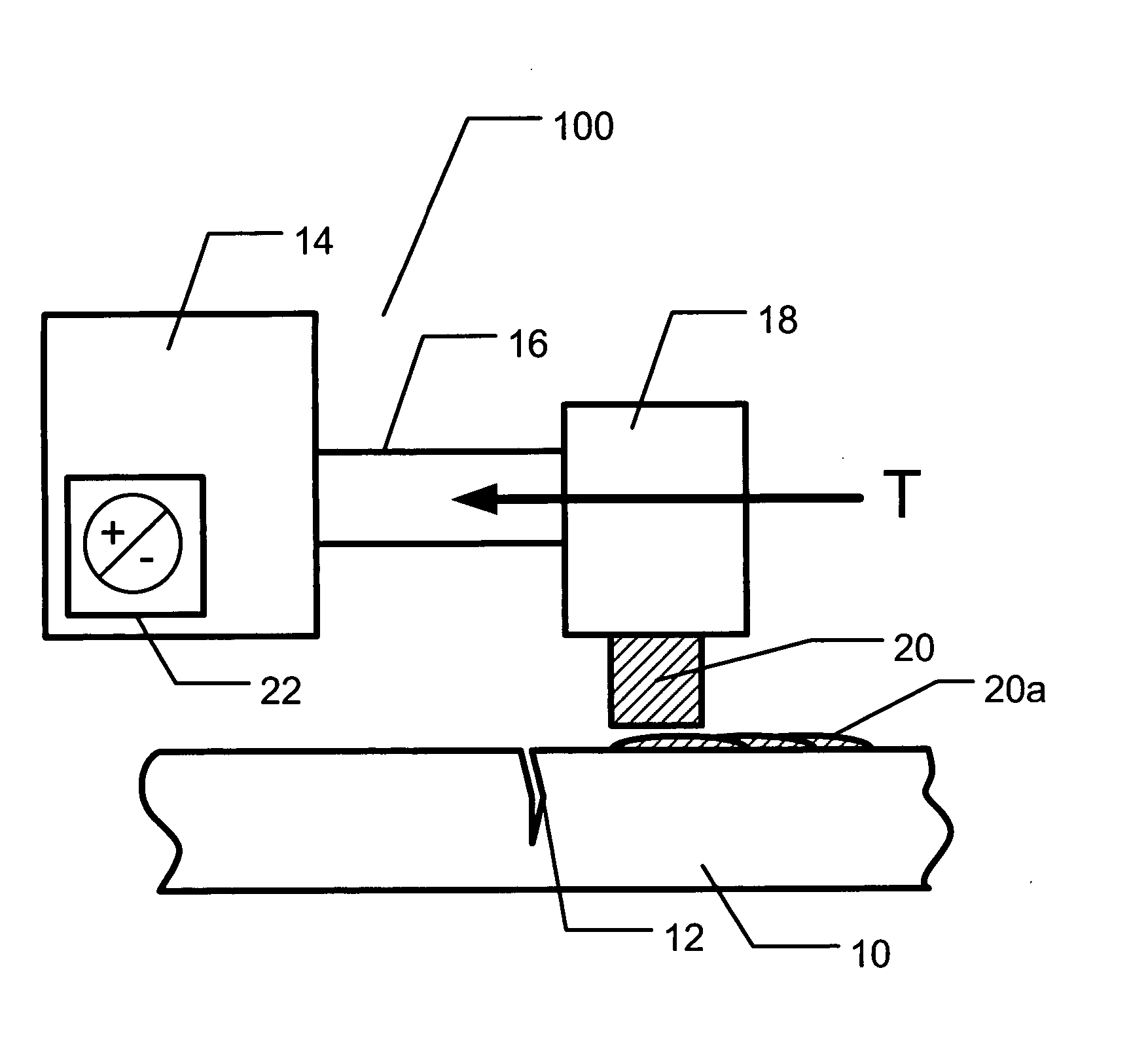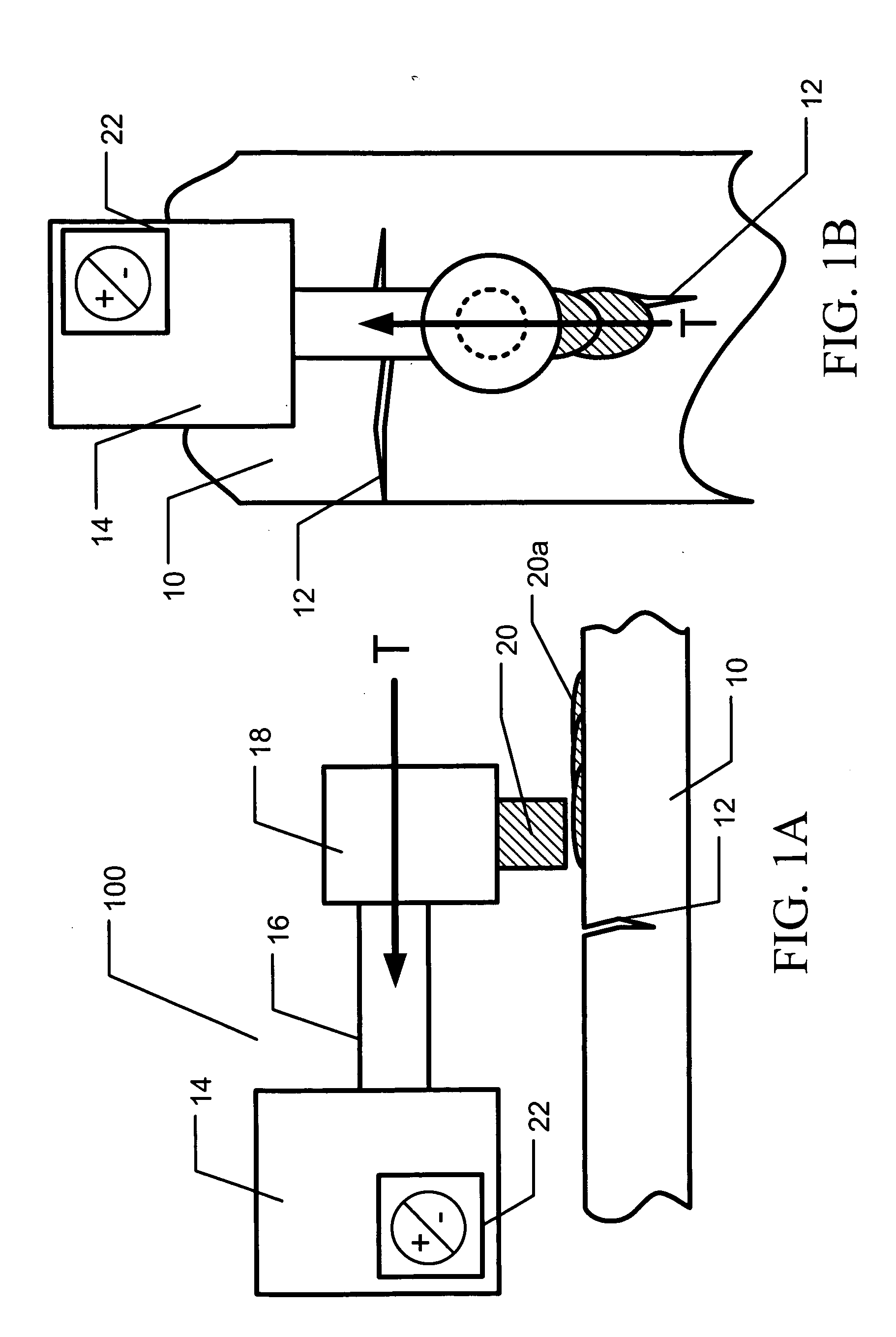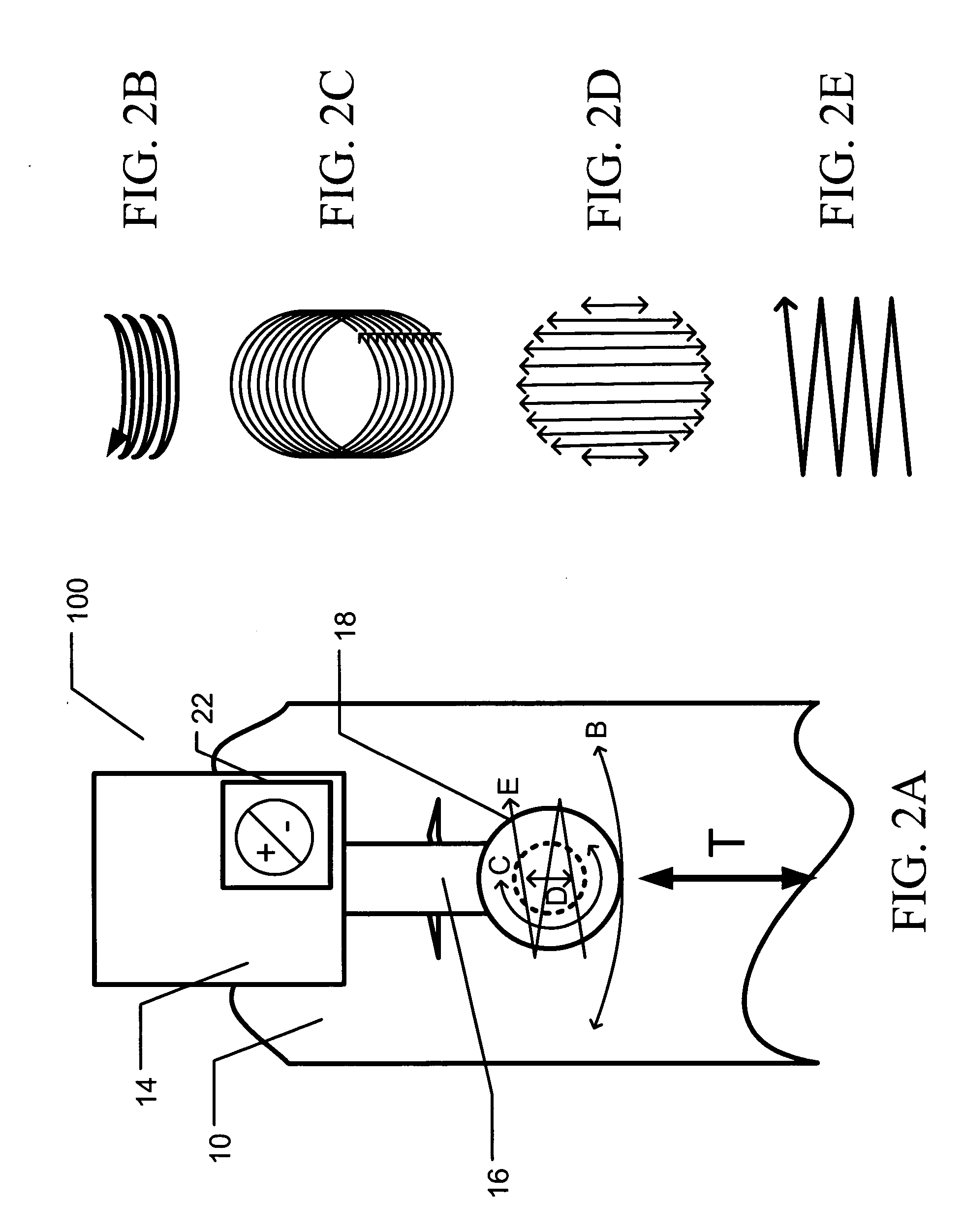Apparatus and method for electrofriction welding
a technology of electric friction welding and apparatus, applied in the field of electric friction welding apparatus, can solve the problems of haz, high undesirable haz, and increased time of weld heat-affected zone, and the relative motion of the contact surface in the weld zone is typically slow
- Summary
- Abstract
- Description
- Claims
- Application Information
AI Technical Summary
Benefits of technology
Problems solved by technology
Method used
Image
Examples
Embodiment Construction
[0025] Exemplary embodiments of the invention provide an apparatus for applying a combination of electrical resistance heating and mechanical friction heating at the same time and location or at substantially at the same time and place, to produce heating sufficient to support solid state or semi-solid state welding. By utilizing a combination of heating modes, the exemplary embodiments of the apparatus may achieve synergistic heating that may provide improved welding efficiency, improved welding productivity and / or tooling of a scale suitable for operation in remote and / or confined locations. This simultaneous application (e.g., combination) of electrical resistance and mechanical friction heating modes to apply the necessary heating to support welding will be referred to herein as “electrofriction welding”
[0026] Electrofriction welding uses both mechanical friction heating and electrical resistance heating simultaneously, or substantially simultaneously, to heat and forge base met...
PUM
| Property | Measurement | Unit |
|---|---|---|
| contact force | aaaaa | aaaaa |
| resistance | aaaaa | aaaaa |
| dimension | aaaaa | aaaaa |
Abstract
Description
Claims
Application Information
 Login to View More
Login to View More - R&D
- Intellectual Property
- Life Sciences
- Materials
- Tech Scout
- Unparalleled Data Quality
- Higher Quality Content
- 60% Fewer Hallucinations
Browse by: Latest US Patents, China's latest patents, Technical Efficacy Thesaurus, Application Domain, Technology Topic, Popular Technical Reports.
© 2025 PatSnap. All rights reserved.Legal|Privacy policy|Modern Slavery Act Transparency Statement|Sitemap|About US| Contact US: help@patsnap.com



